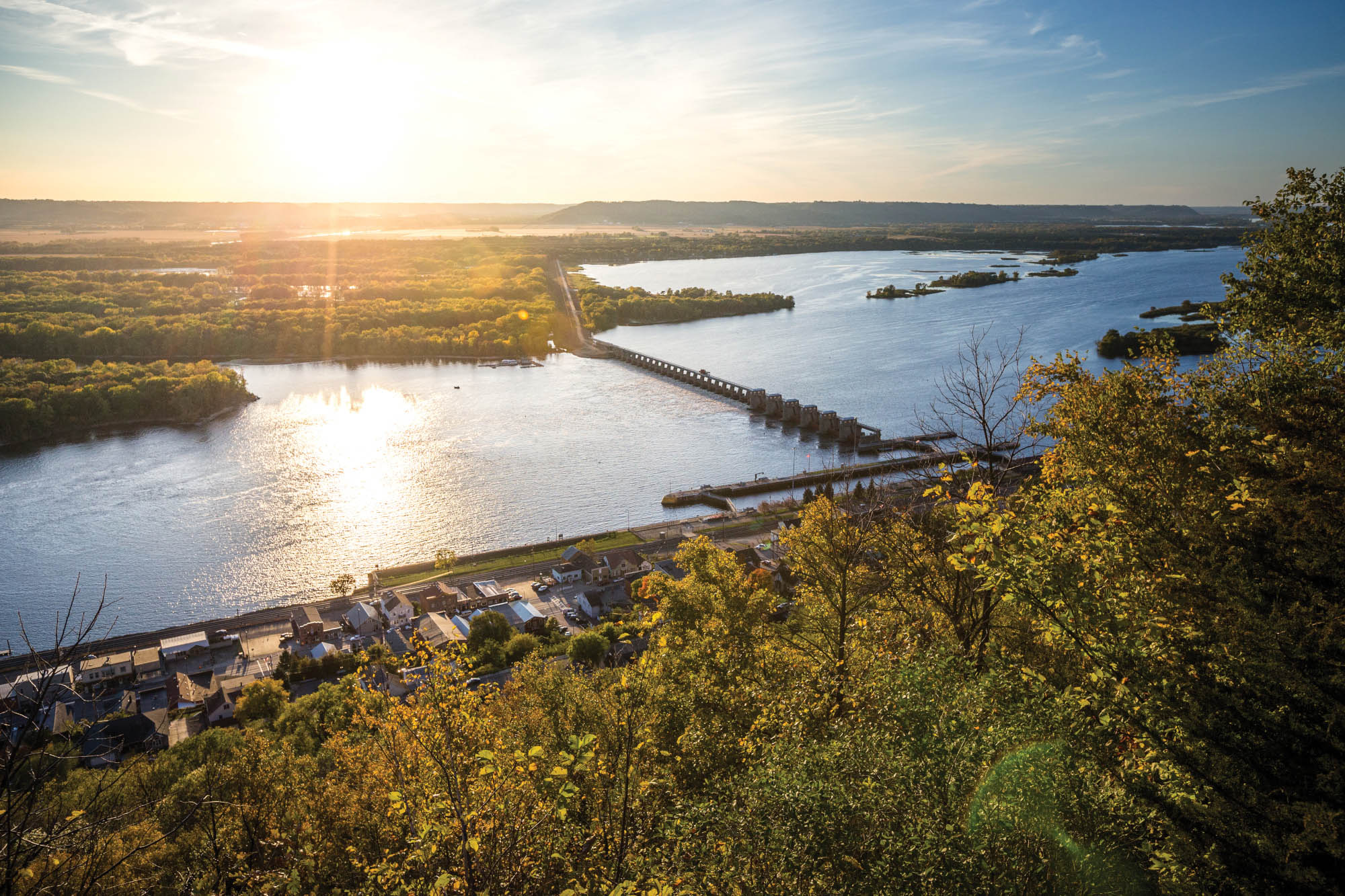It’s not only the Mississippi River that winds nearly 3,000 miles from Lake Itasca, Minn., to the Gulf in Louisiana. The Great River Road follows all along it.

The road, a federally designated national scenic byway and “All-American Road,” was the topic of an America’s Watershed Initiative lunch and learn webinar November 12. Guest speaker Susanne Thiede-Barnet, managing director of the Mississippi River Parkway Commission, focused on how the Great River Road drives tourism, supports local economies and helps to preserve the cultural and natural heritage of river communities.
“The Great River Road is more than a road,” she said. “It’s a living corridor. It ties together communities, ecosystems and stories from Minnesota to Louisiana.”
The Mississippi River Parkway Commission was established in 1938 to help preserve, promote and develop opportunities along the Mississippi River for economic and cultural vitality. It has four standing committees: cultural and heritage; environment, recreation and agriculture; marketing; and transportation.
“It’s considered one of the oldest and longest national scenic byways,” Thiede-Barnet said.
More than 20 million people annually visit sites along the Great River Road, which was voted as the best scenic drive in USA Today’s 2025 “10 Best” Readers’ Choice Awards.
It connects major cities such as Minneapolis-St. Paul, St. Louis, Memphis, and New Orleans with a network of nearly 100 Great River Road interpretive centers, including museums, historical sites and other attractions. Major stops along the road include UNESCO World Heritage sites like Cahokia Mounds and Poverty Point as well as Hannibal, Mo., known as being the boyhood home of American author Mark Twain, and Civil War sites such as the Vicksburg National Military Park. Smaller, but still important, stops include the Delta Blues Museum in Clarksdale, Miss., the National Eagle Center in Wabasha, Minn., and the National Mississippi River Museum & Aquarium in Dubuque, Iowa, and the Johnny Cash Boyhood Home in Dyess, Ark.
“These sites, among others, tell the greatest, the most impactful stories of American history, from ancient Native American mound-builders to European explorers, the Civil War as well as the industrial revolution,” Thiede-Barnet said.
Tourists spend an estimated $2.14 billion annually while traveling the Great River Road. Thiede-Barnet said 61 percent of travelers are 45 and older, with baby boomers and retirees being key audiences because of their available leisure time and disposable income. However, tourism professionals are noting “rising interest” from Gen Z in taking road trips and participating in outdoor activities and adventure travel.
One way in which those traveling the Great River Road break the trend is that roughly one-third of travelers along the byway do not plan their trip in advance. Some may plan roughly half of their time but leave the other half open, deciding what to do based on what they see.
This creates opportunities for small river towns to draw visitors in. About 80 percent of the communities the Great River Road passes through have populations of 25,000 people or fewer and may be particularly reliant on funds from those passing through, Thiede-Barnet said.
Thiede-Barnet spoke about the importance of recreation and community engagement in attracting visitors, whether through biking, birdwatching, hiking, fishing, paddling or other river activities or through festivals, cultural events and interpretive programs. Partnerships with local governments, nonprofits and tourism agencies can be key, as can preservation and sustainability efforts. An example she gave was activities planned around National Pollinator Week in collaboration with environmental and heritage organizations.
“Everything that we do depends on collaboration,” she said.
She urged people to visit the website experiencemississippiriver.com, which she called a hub for information about the byway and the places and events along it.
“It’s not just a scenic drive,” she said of the Great River Road. “It keeps the river communities connected and thriving.”
————
Featured photo caption: Buena Vista Park in Wisconsin, one attraction along the Great River Road, overlooks the Mississippi River. (Photo by Travel Wisconsin)



